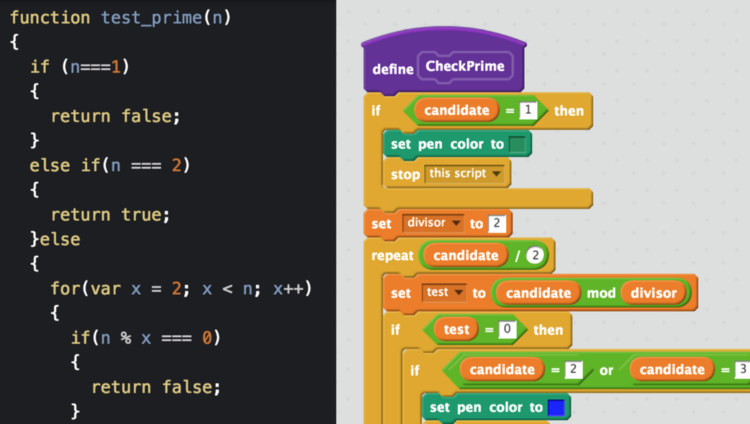Tech has become inevitably present in our everyday lives and will become even more so a few years from now. In consequence, tech or XXI century skills have passed from novelty to an actual necessity. Learning how to code has quickly become a must in every school, rather than just an elective. Coding enables children to express their creativity through another language, the language of the future.
You may be wondering if a child of any age can learn how to code…. well, believe it or not, the answer is yes. Even kids who can’t read and write yet can do it. Yes, as surprising as it might sound, it’s true. This is possible because there are 2 types of coding languages: block-based and text-based (line) code. Let’s explore a little bit more about the coding languages that your child can start with.
Block-based coding
About 20 years ago the MIT Media Lab introduced the concept of block-based code with a language named Scratch. The objective was to create a way to program computers by simply dragging and dropping puzzle blocks that represented complex programming commands. This new method opened the doors for kids to create through programming without having to write a single line of code. With block-based code, teaching and learning the basics of computer science became accessible to young learners.
But how does block-based code work? Block-based code, or visual coding, uses colorful drag and drop shapes in a workspace to simulate the coding. Children can create sequences of actions according to the color-coded categories they choose. There are movement blocks, control or events blocks, blocks for adding loops, variables, and functions.
Block-based code is the simplest and most fun way for kids to start learning the logic of coding. The best thing about this is that despite being a simplified form of code, your children will be able to create and run games, apps and animations. Besides, block-based code will give them a solid basis to understand text-based code later.
Scratch is one of the most popular block-based coding languages out there. We actually use Scratch in some of our Micro Coding Classes because it favors pattern recognition, enhancing the understanding of the structure and logic behind programming. Additionally, block-based coding is a great first step for kids to go from the basics of programming to a more advanced level with text-based line code used by professionals.
Text-based coding
On the other hand, we have text-based line coding. This type of coding language is basically typing instructions while following syntax. Syntax, just like in spoken languages, is the grammar and spelling rules of a coding language. It can easily be introduced to kids after they understand block-based coding or if they are at an appropriate developmental age.
Learning the syntax of text-based coding languages is easier when kids recognize that each section of text-based code corresponds to the blocks they learned with block-based code. This is where kids will start understanding text-based coding languages and applying real computer science knowledge.
In simple terms, text-based programming languages are typed using a keyboard and stored as text files rather than the drag and drop style that block-based code uses. Some of the most popular text-based programming languages are Python, Java (used in Minecraft), and JavaScript.
With text-based coding, kids, and even expert coders, can tackle some typical problems while starting coding. Some of the most common ones are Syntax Errors, Code Styling, and Readability. These are small and very common errors that learning how to face can help kids better understand the languages and processes they are learning.
The question about when we should start teaching our kids text-based coding often arises. And the answer is, there’s no specific age to start with. To use text-based code, kids should know how to write and read, but other than that there’s not a specific age when to start. Actually, just like in any other spoken language, the earlier a child is exposed to it, the easier it is for them to catch it.
Conclusion
Learning to code at a young age is a fundamental skill that will grow in children as they enter into adulthood. It enables children to understand the technology that surrounds them, becoming not just users, but developers and creators of their own reality.
